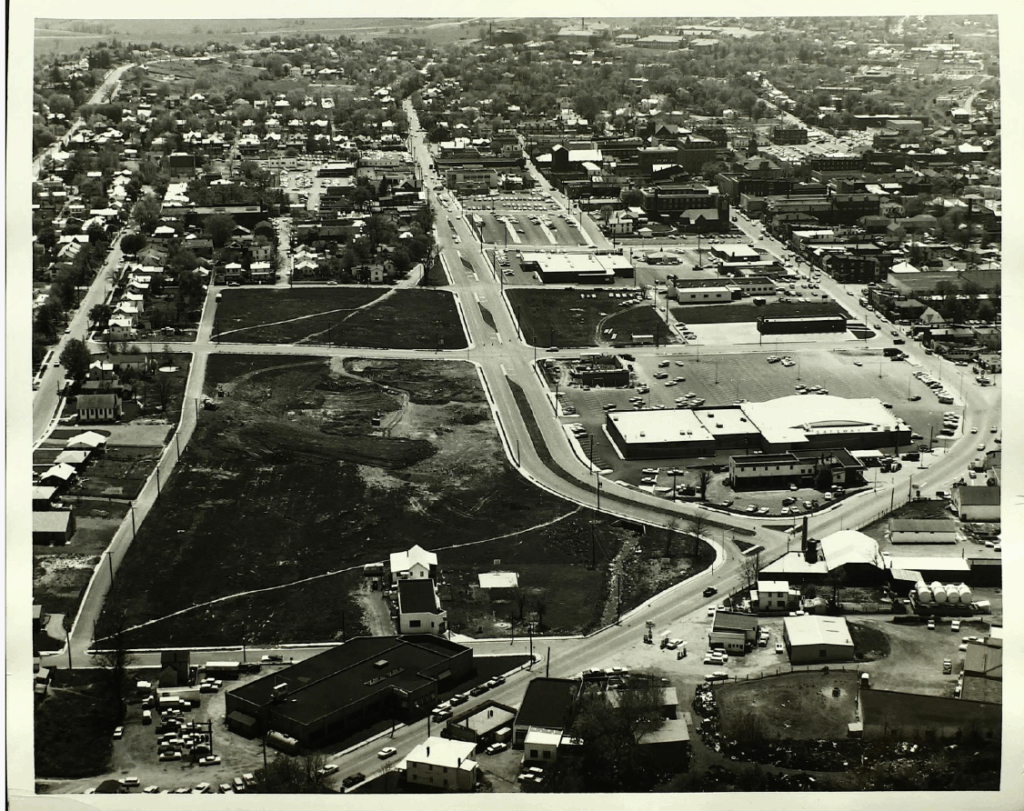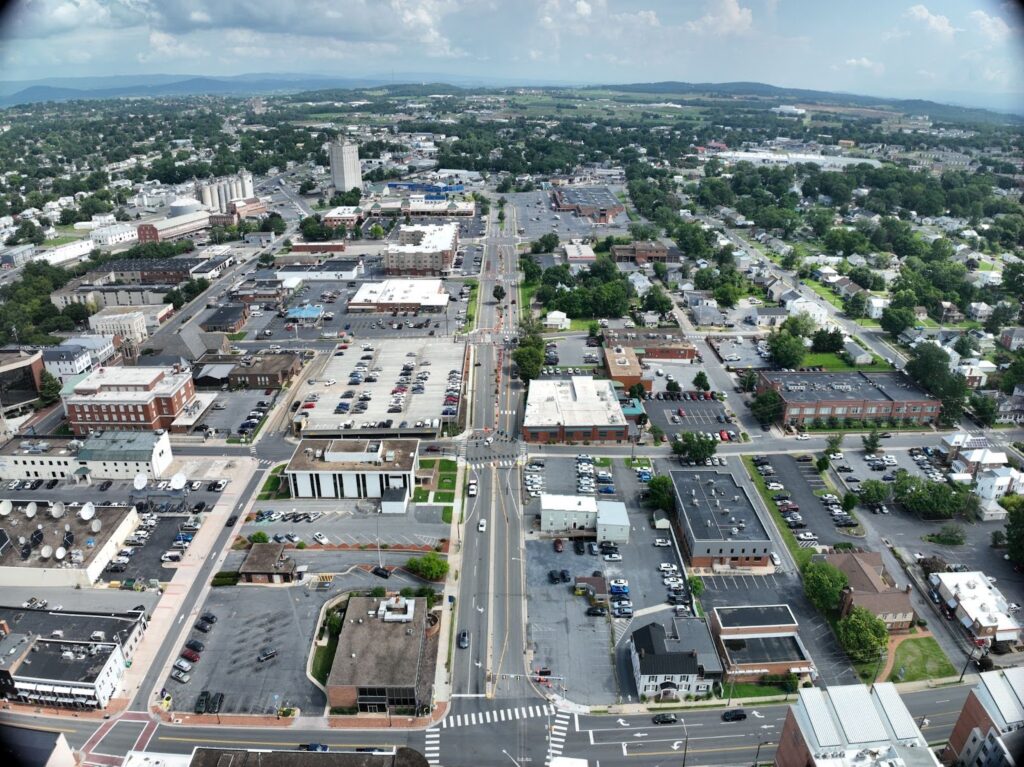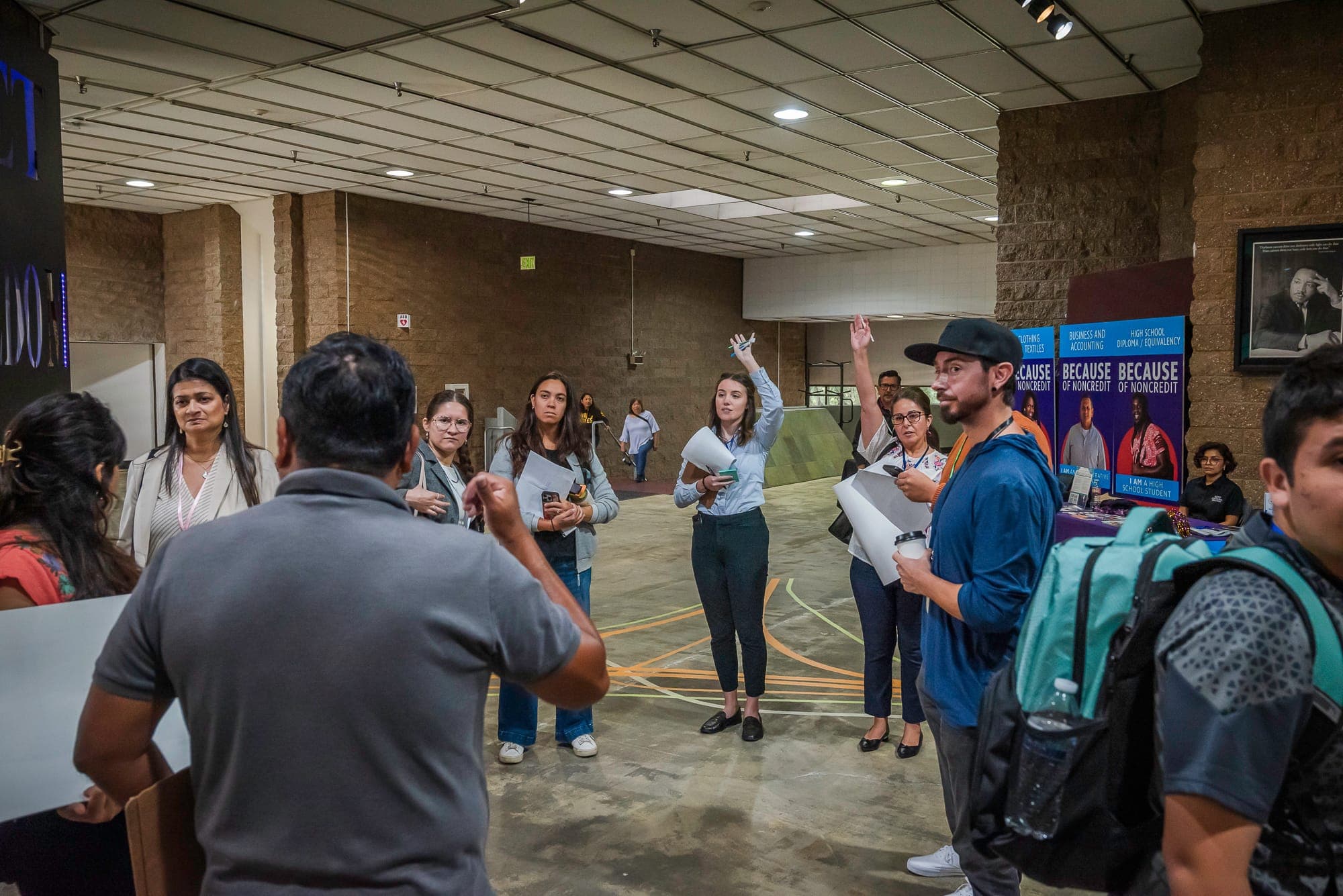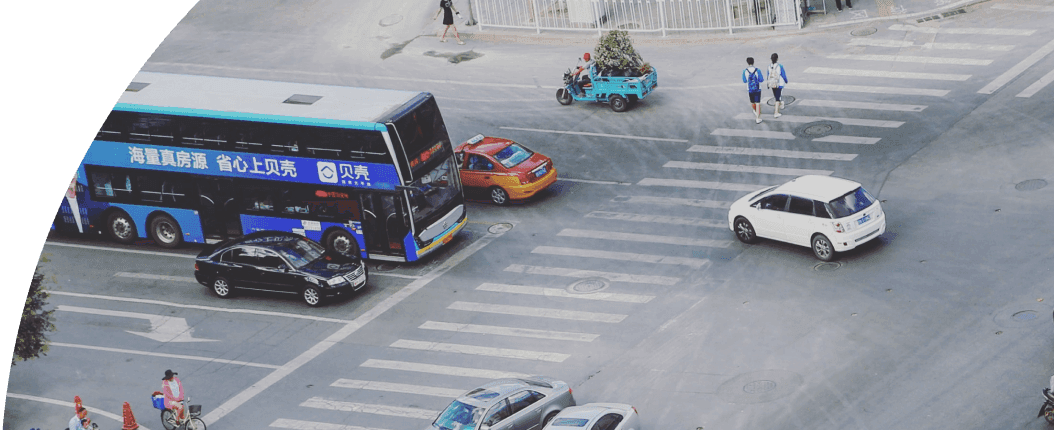
News
By Steve Davis, July 24, 2025
Harrisonburg, Virginia was selected for a previous round of the Community Connectors program where 15 communities received capacity building subgrants and wraparound technical assistance to develop and advance ambitious projects to restore the damage of past infrastructure decisions. One of Harrisonburg’s final projects (a temporary demonstration project) helped inspire this year’s specific focus on divisive or dangerous roadways.
The city-led Harrisonburg team came in with a project proposal to reimagine or rework Mason Street, a four-lane arterial just north of downtown originally built during the larger project of “urban renewal” in the 1960s in the historically Black Northeast Neighborhood. As part of those “renewal” activities, black-owned businesses were seized, more than a hundred homes were taken and families displaced, and the city’s housing authority was created to implement these damaging plans. Many properties were seized to add a new street within this small city’s street grid, but instead of a modest city street, it was built to the typical 1960s standards of the time with five wide lanes and a clear focus on moving vehicles quickly right through the middle of the heart of the city. The result is a physical and emotional scar that to this day that separates the historic fabric of downtown and the Northeast neighborhood.

The city’s team included two Black-led community-based organizations in the neighborhood. Building trust between the neighborhood writ large and the city was a core priority for this team. So when it became clear early on that the neighborhood hadn’t been fully engaged in the city’s original aspirations to remake Mason Street, the city took a step back to prioritize the needs and desires of the neighborhood first and use the program to advance a small-area planning process for the entire NE neighborhood. 12-18 months into the two-year program, SGA staff suggested that a logical step toward reimagining Mason Street could be our Complete Streets Leadership Academy and a temporary project to test designs, gather feedback, and further engage the NE neighborhood. The team invited additional residents and city staff to participate in a CSLA cohort, which culminated with the team designing and implementing a month-long temporary demonstration project on Mason Street to test out their ideas and engage the broader community with them as well.
Mason Street is four lanes divided by a median with occasional turn lanes. The final temporary project design closed the southbound side of the median and converted the northbound side into two-way travel, eliminated three traffic lights in favor of two-way stops and two new temporary roundabouts, and created new crosswalks, among other improvements. Data collection is still ongoing throughout July but initial observations showed no major impact on traffic, with travel times that appeared shorter for travel along the entire four-block corridor.

Here are some key contributors to the success of their project—which also point to what we want to emulate with the teams in this next round of the Community Connectors program.
- The team included numerous city departments (Public Works, Planning and Community Development, the City Manager’s office, Communications) but also demonstrated a real commitment to participation by having the deputy city manager serve as the project lead, with the full backing of the city manager.
- The core team included an elected city council member who also runs a black history nonprofit based in the NE neighborhood, and a NE neighborhood association leader.
- The core team met weekly for the duration of the Community Connectors program (and CSLA), alternating between in-person and virtual meetings.
- We often say that “projects move at the speed of trust,” and when it became clear that trust levels were low and the overall initial project idea developed by the city didn’t have community buy-in, the city paused, took a step back, altered the course of their project to develop a project together that everyone supported.
- The core Community Connectors team was expanded for the Complete Streets Leadership Academy. The team brought in several NE neighborhood residents, more city staff, a member of the local bike advocacy coalition, and a pastor and resident in NE. The DPW director also participated in every session, which was crucial as the head of the department responsible for implementing the final demonstration project. And the team allowed a portion of their grant to be used to compensate the residents and CBO members for their time.
- Mason Street wasn’t just a dangerous street in need of changes. It was also intrinsically connected to the city’s painful history of using transportation to intentionally segregate, divide, and displace people. We are hopeful to find other streets with a similar history for this round of projects.
- The city controls all of the streets within their borders, even the two main state routes. This made changes easy to coordinate within just one level of government.
Related News

© 2026 Smart Growth America. All rights reserved
Site By3Lane Marketing














